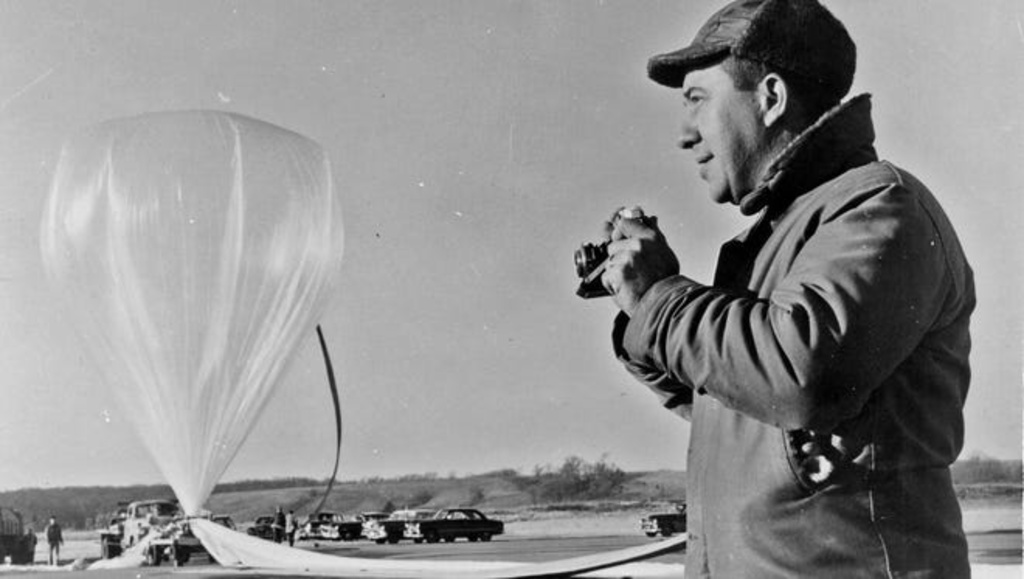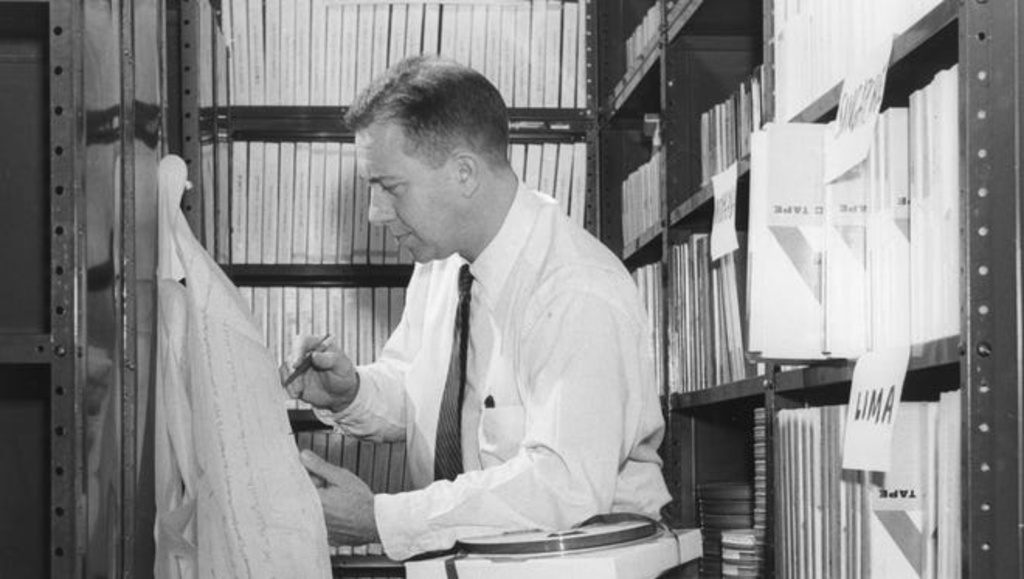Main navigation
The "Father of Space Science"
Born in Mt. Pleasant, Iowa on September 7, 1914, James A. Van Allen attended public schools and Iowa Wesleyan College in Mt. Pleasant. He continued his studies at the University of Iowa, earning his M.S. degree in solid state physics (1936) and his Ph.D. degree in nuclear physics (1939). After receiving his Ph.D. degree, James A. Van Allen moved to the Carnegie Institute in Washington D.C. Before he could make much progress in his research of cosmic rays, World War II intervened, and his work was shifted to the development of radio-proximity fuses for anti-aircraft shells. In 1942 the proximity fuse project was moved to Johns Hopkins Applied Physics Laboratory. When the development phase was completed, he was commissioned as a lieutenant in the U.S. Navy and sent to areas in the Pacific to test shells under combat conditions. For this service he received four combat stars.
After World War II, Van Allen returned to Johns Hopkins University where he rekindled his interests in cosmic rays and pioneered the development of Geiger tube instrumentation for flight on transformed captured German V-2 rockets. These flights resulted in the first measurements of cosmic rays at high altitudes above Earth’s atmosphere, as well as other measurements of atmospheric ozone, solar ultra-violet light, and the geomagnetic field. He also supervised the development of a smaller U.S. rocket, called the Aerobee, that had capabilities similar to the V-2 rockets.

In 1951 he returned to Iowa as a Professor and Head of the Department of Physics at the (State) University of Iowa. In Iowa City, he developed a low-cost balloon-borne rocket, called a "rockoon," that could reach altitudes comparable to those achieved by the V-2 and Aerobee rockets. This work led to the first latitudinal survey of the cosmic ray intensity above Earth’s atmosphere using a series of rockets launched from ships as part of the International Geophysical Year, 1957-58.

Special To The Press-Citizen.
During this same period he started studying the feasibility of launching an artificial satellite, and was funded to develop a Geiger-tube cosmic ray detector for the Vanguard program, which was designed to launch a spacecraft into a low Earth orbit. Before these plans came to fruition, the Soviet Union launched Sputnik 1, the world’s first satellite. In the resulting frantic effort to catch up with the Soviet Union, Van Allen was asked to install his instrumentation on a spacecraft to be launched by a rocket under development by Wernher von Braun at the U.S. Army’s Redstone Arsenal. The spacecraft,
Explorer 1, was successfully launched in the early hours of February 1, 1958. A similar instrument was launched on Explorer 3, which carried a tape recorder that allowed data to be obtained for an entire orbit. Data from both Explorers 1 and 3 resulted in the discovery that Earth is encircled by two donut-shaped belts of energetic charged particle radiation, now known as the Van Allen radiation belts.

Over the course of his career Van Allen provided similar energetic charged particle detectors for twenty spacecraft projects, including the first flights to the planets Venus, Mars, Jupiter and Saturn. Using University of Iowa instruments on the Pioneer 10 and 11 spacecraft, Van Allen was the first to show that Jupiter and Saturn had intense radiation belts and large extended magnetospheres. Even after retirement in 1985, he remained active in his research. As the Pioneer 10 and 11 spacecraft proceeded outward toward interstellar space after their encounters with Jupiter and Saturn, he made the first measurements of the Radial variation in the cosmic ray intensity with the distance from the Sun. These measurements provided crucial insight into the entry of cosmic rays into the solar system, a topic that he continued to study until the time of his death at age 91.
From his earliest days at the University of Iowa, Van Allen involved students in all aspects of his research, contributing to the education of an entire generation of space scientists, many of whom became leaders in government, industry, and at university institutions.
He received numerous awards for his research and teaching including: memberships in the Iowa Academy of Science and the National Academy of Sciences; the U.S. National Medal of Science presented by President Ronald Reagan in 1987; and the Crafoord Prize from the King of Sweden in 1989.
Under his guidance, the University of Iowa earned recognition as a world leader in space research.
